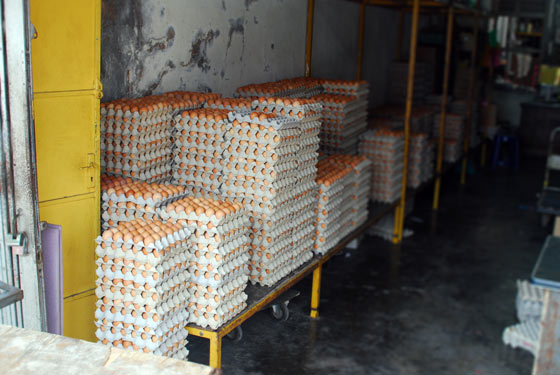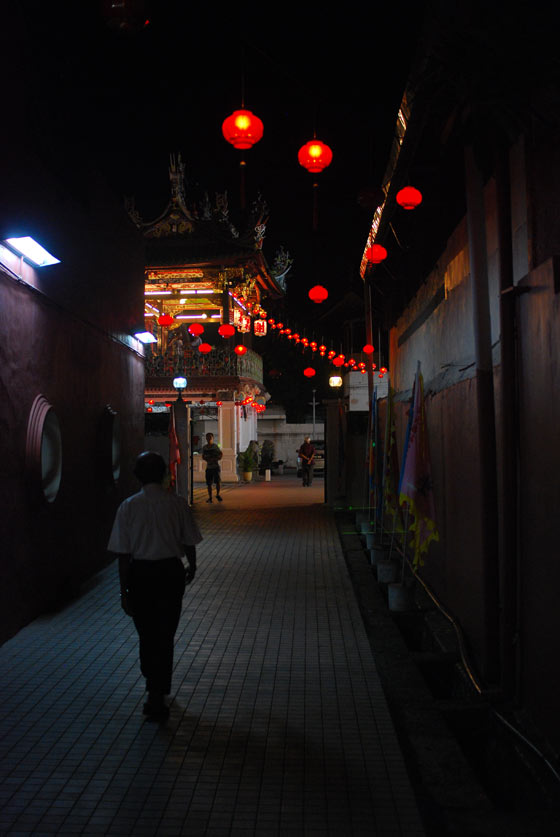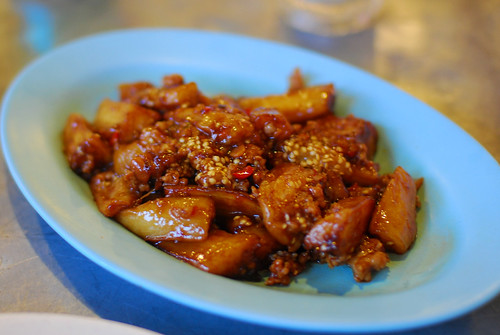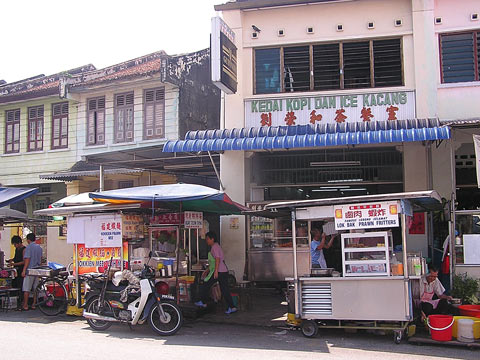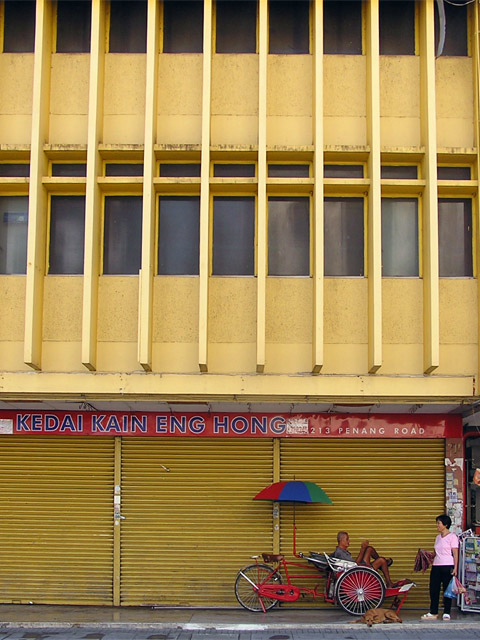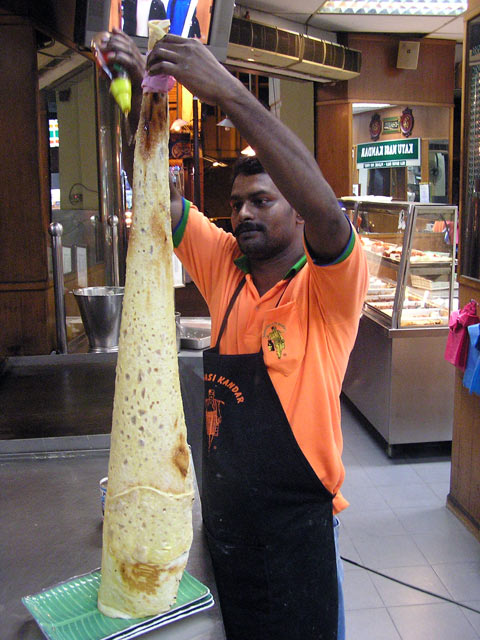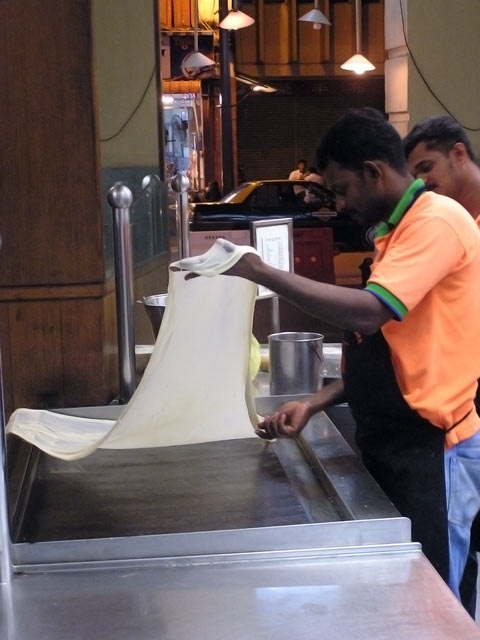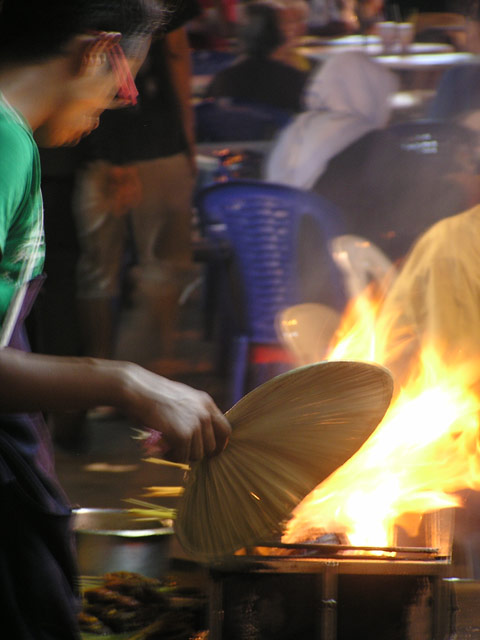
Searing satay at Gurney Drive Hawker Center.
Gurney Drive’s Hawker Center is a roughly triangular lot encircled (entriangled?) by the most diverse set of street food vendors that you’ll find anywhere in Malaysia, alongside the mudflat-facing promenade. The road was named after Sir Henry Gurney, Malaya’s High Commissioner whose brief reign ended in 1951 when he was entriangled by Communist guerillas during the Malayan Emergency, and shot, allegedly sacrificing himself to draw fire away from his wife and driver. Unlike the sludgy foreshore, the hawker center does him no disrespect.
It smells of fried goods, dried squid, hae ko paste, laksa leftovers, and tourists. Despite being at the more commercial end of hawker spectrum, it is worth a visit just for the sheer variety available in a single, crowded venue. It is a place to begin trying to define what constitutes Malaysian street food in its infinite forms or just to establish a baseline, the culinary denominator for future Penang hawker meals.
At first, I started with a plan of moving from savory dishes to sweet-savory to sweets, with a palate-cleansing dried squid somewhere in between.
Within minutes this plan had fallen apart.

Popiah (above) has its origins in Fujian cuisine, with the Straits Chinese version made from a thin wheat flour pancake wrapping sliced jicama, bean curd, prawn and crab meat. This one was a little light on the crab…
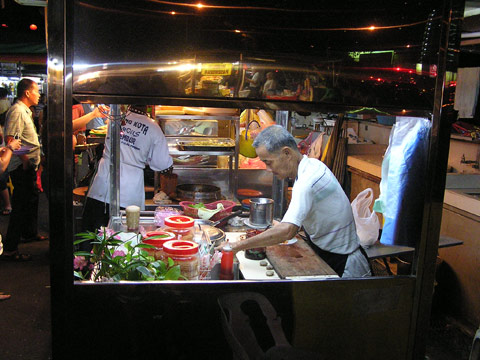
…but the vendor had a perfect economy of movement in making them. There is value in eating food that is as entertaining to watch being constructed as it is to consume.
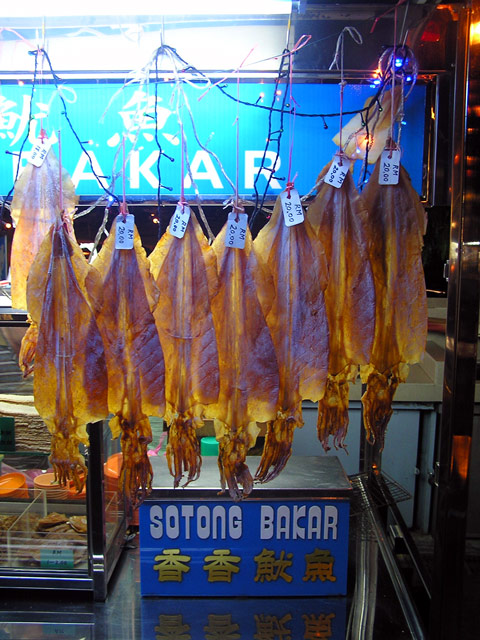
I passed on this dried squid, being too huge.
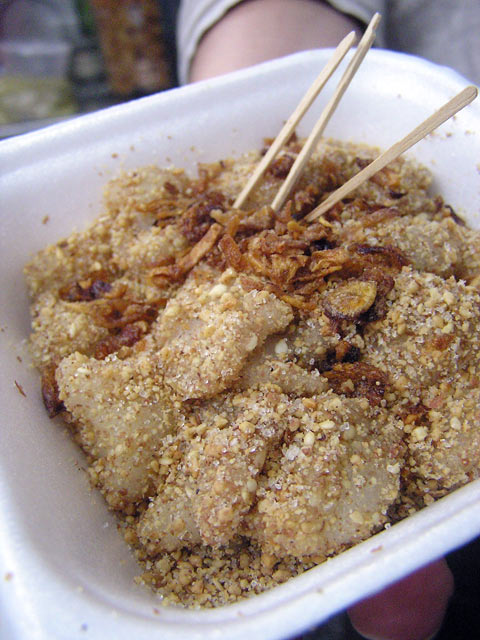
By all rights, muar chee (above) should not be as delicious as it looks. The vendor pulls a gelatinous blob of glutinous rice flour dough from a warmer, a blob which reminded me a little of the game pods from David Cronenberg’s eXistenZ.
She then proceeded to toss them into a perspex case filled with sugar, crushed peanuts and sesame seeds; dicing the blob whilst mixing and coating with the sweet/savory powder. The topping of dry-fried onions adds a crispy counterpoint to the chewiness of the rice flour.
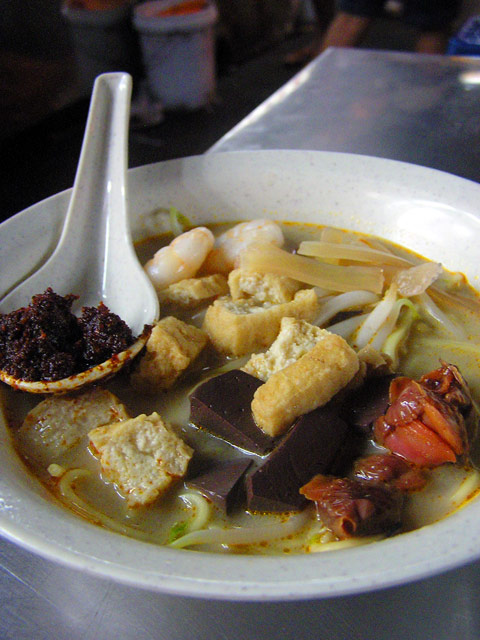
This seafood curry mee has all the right elements: juicy prawns, a few blood cockles, opaque slices of pickled squid, congealed chunks of blood, and luscious chunks of fried tofu soaking up the curry broth. But it didn’t come together. The broth lacked the richness to carry the rest of the ingredients.

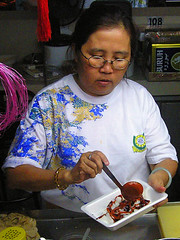
Chee cheong fun division of labor
I had a friend email me every few weeks to receive status updates on the amount and quality of chee cheong fun that I was consuming. Hello, Vin. The version of the dish that I’m more familiar with comes via Hong Kong with translucent sheets of noodle covering minced pork and prawns, topped with a light soy sauce.

The Penang chee cheong fun is even simpler. Sheets of noodle are rolled and sliced, then topped with local prawn paste hae ko, sesame seeds, and depending on your preference for heat, chili sauce.
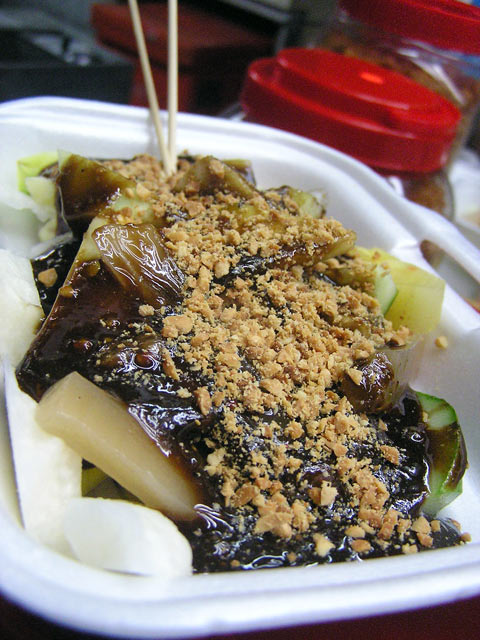
No amount of eating can prepare you for the surprise of Penang rojak. What lies beneath the glossy, piquant and pungent shrimp sauce? Fruit? Seafood? In this case, both. The fruits of the sea came in the form of pickled squid; fruits from a tree in the form of green mango, papaya, starfruit and rose apple. The pineapple comes from a bromeliad which marks the outer edge of my botanical knowledge.
Rojak is a dish that shouldn’t fit together. There are too many elements, all of which vie for your attention: the diametrically opposed texture of squid and rose apple; sourness from green mango and lime juice (?); the trenchant odor of shrimp. But it works.
Location:Gurney Drive, Penang
